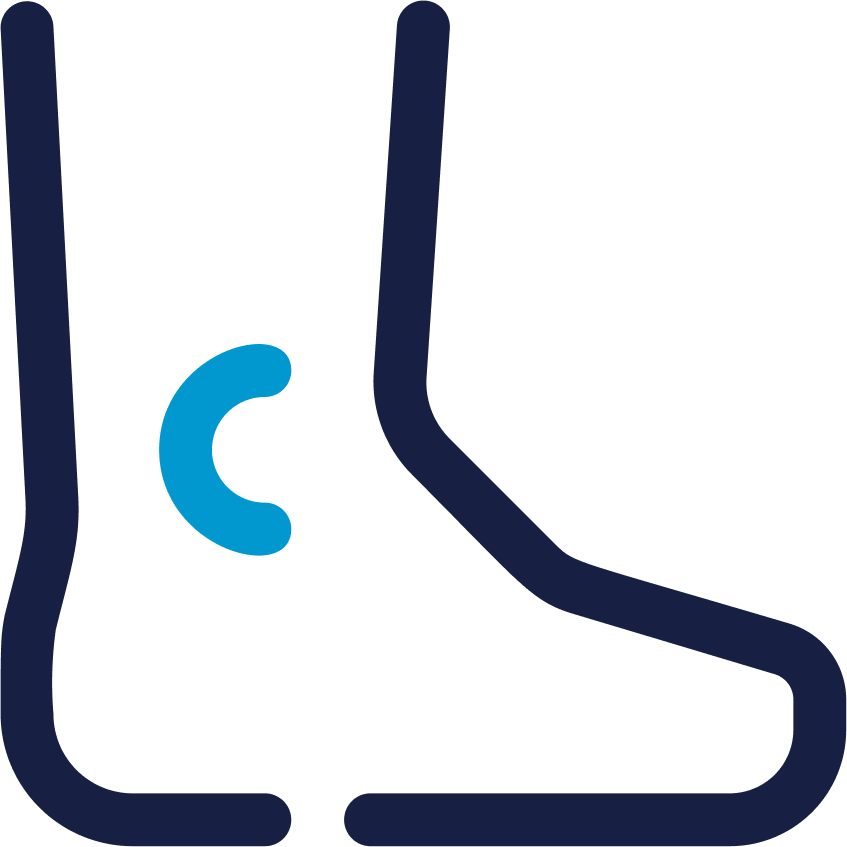
- Specialty Procedures
- /Foot/Ankle

An injury that impinges on the back of your lower leg is called an Achilles tendon rupture. Your Achilles tendon is a durable fibrous cord that is strong and attaches your heel bone to muscles in the back of your calf. Overstretching this tendon can partially or completely rupture or tear it. When this happens, you may feel a snap or pop and sharp pain in the back of your lower leg and ankle which can affect how you walk.
If you participate in recreational sports, you are more at risk of this injury. Suddenly increasing the amount of stress on this tendon often causes ruptures. Some examples include:
The type of treatment you receive for a ruptured Achilles tendon will depend on your activity level, age, and how severe your injury is. Typically, active and younger people prefer surgery to repair an Achilles tendon injury, while older adults prefer nonsurgical treatments. Both, however, have been shown to be effective.
Nonsurgical Treatment
In order to give your injured tendon time to heal, nonsurgical treatment usually involves you being placed in a walk boot with wedges for elevating your heel or cast. With this type of treatment, you avoid the risks that can come with surgery, like infection, for example. But, with nonsurgical methods, you have a higher risk of re-rupturing your tendon again and you may experience a longer recovery period. If you re-rupture your tendon, the Achilles repair surgery can be more problematic.
Surgery
Surgery typically involves your Pensacola orthopedic surgeon making a large incision (open surgery) or a series of small incisions (percutaneous surgery) in the back of your lower leg, followed by putting the tendon back together with stitches. The foot and ankle surgeon might reinforce the repair with other tendons, depending on your torn tissue condition. Nerve damage and infection are possible complications you can experience with surgery. With smaller incisions, however, your risk of infection is reduced.
Whether you have an open surgery or percutaneous surgery, the surgeon will operate through your incision to sew your tendon back together. In order to allow the swelling to go down, you may have to wait about a week after the rupture before you have surgery.
No matter which type of surgery you receive, you will likely be placed in a walking boot or cast or a similar device for up to 12 weeks. The boot or cast is put in a position to keep your foot pointing downward while your tendon heals. After a period of time, the boot or cast will then be gradually adjusted so your foot is pointing in a neutral position.
Before you have your boot or cast removed, most orthopedic specialists will have you start weight-bearing and movement exercises. Your recovery period will likely be around six months.
After your nonsurgical or surgical treatment, your doctor will place you in a rehabilitation program that involves physical therapy exercises to strengthen your Achilles tendon and leg muscles. You should expect to return back to your normal activity level within four to six months.

